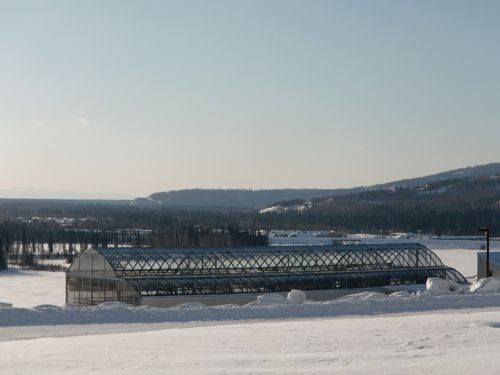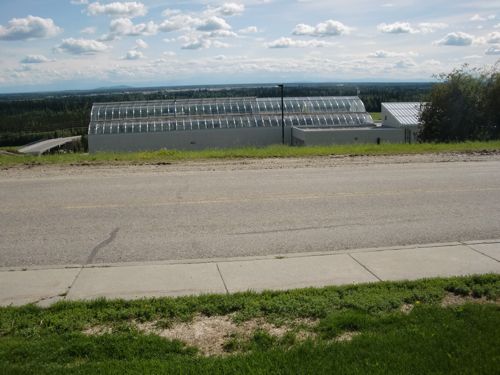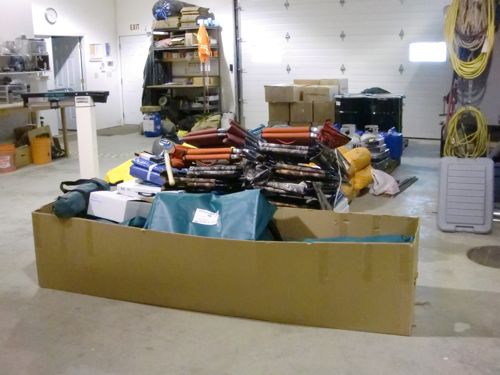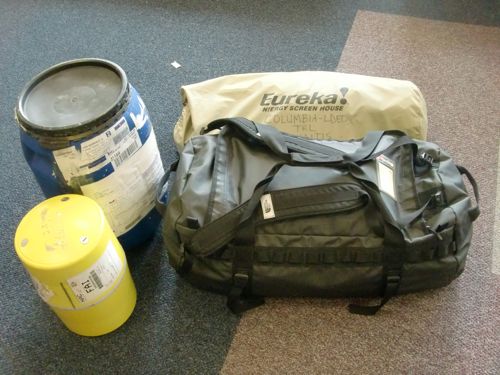Lamont-Doherty Earth ObservatoryA location used for observing terrestrial and/or celestial events. researcher Kevin Anchukaitis and I arrived in Fairbanks around midnight on July 3rd. By the time we had collected our bags and found the rental car, it was July 4th. There were even a few fireworks going off as we drove to our dormitory accommodations at the University of Alaska. Seeing the fireworks reminded me of arriving here near midnight back in February for PolarTREC orientation. In February, however, it was dark and there was a hint of the Aurora Borealis in the night sky. Now, it was still light at midnight and a few sporadic fireworks displays were visible. Somehow, fireworks aren't quite as thrilling when it isn't dark out!


The mantra for field research in far-away places is always.... be flexible. Our flexibility was tested when, upon our arrival, Kevin received an email from the third member of our team that he would be unable to join us. So, what to do? Well, the good news was that we would only require 1 flight instead of 2 to get to our remote field site. The bad news was that our work would be compromised because 3 is the optimum number for coring trees and collecting data (2 people coring and one measuring the tree and collecting site-specific data). We sent the word out through a variety of contacts here in Fairbanks and managed to get a last-minute replacement team member who we will be meeting with tonight. Aaaah, flexibility.
It was a quiet Fourth of July in Fairbanks. A rainy, grey sort of day, with occasional downpours. Perfect weather for resting and recovering from the previous day's travels. I took a nice walk on some of the trails near the University, taking in the scenery and testing out my mosquito-swatting abilities. The trail system is quite extensive, serving as hiking and biking trails in the summer and nordic ski trails in the winter. On the way back to the dorm the rain started in earnest. Luckily, there was a small ski hut that was open to take shelter in during the worst of the storm.
Today was dedicated to shopping and packing (and finding a 'replacement' team member). We started out at the Polar Services building, retrieving equipment that Kevin had left there at the end of last year's field season, as well as a large container of freeze-dried food that he had shipped up last month. Then, it was off to Fred Meyers. Fred Meyers is not a person--it's a place. It's best described as a grocery store on steroids. We were able to get the rest of our food and most of our other supplies there. Best of all--the first Tuesday of the month is 'Senior Day', with a 10% discount on foods and items from the 'Health/Nutrition' section of the store (all those organic things we put into the cart). Alaskan standards for being a senior seem pretty low to me--I qualified! I didn't even have to show my AARP card.

After shopping we returned to the dorm to spread out and repackage the food and supplies we had purchased. If you're wondering what we're bringing with us for caloric gratification, you'll have to wait for a more detailed journal in the near future. The general overview of the food scene is hot cereal for breakfast, cheese, tortillas, and snack-type foods for lunch, and freeze-dried meals for dinners. Don't forget those special cookies I was given by my friend Shan--those were carefully packed. We got rid of all the cardboard and put the food into ziplock bags. All the food was then put into bearproof plastic storage containers. Are they really bearproof? I don't want to know!

Tomorrow we are flying to Fort Yukon on a commercial flight at 9am. From there, we will fly to our research site on the Firth River by small bush plane. It will take 2 flights to get the three of us, plus our food and equipment, to camp. In addition to my backpack, I am carrying a smaller pack that is filled with all the electronics I will need for communicating from the field. This includes a laptop computer, satellite phone, digital camera (plus a backup camera), and a solar panel for charging all this equipment. Once we leave Fort Yukon I will be communicating via a satellite phone modem system hooked to my laptop. So keep following the journals and don't worry if I miss a few days. There are lots of variables involved when you're trying to send out information from a field camp in the true 'middle of nowhere'!


Comments